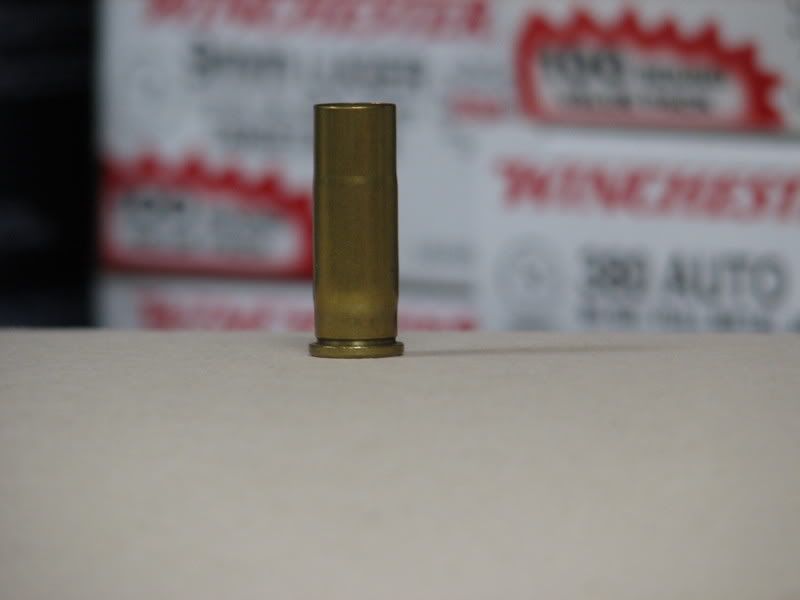As DWalt mentioned, there were some quality conversions made, but I have never sen one. The .007" difference in the case dimension can split a case and cause a possibly dangerous situation. See the attached picture of what had been a mild 38Special WC target load. Note the bulge in the center section of the case. If this had been a full power load it most probably would have split and shot hot gasses out both ends of the case. I could not recommend you fire any 38 Special in a reamed cylinder chamber of a 38 S&W.
Thank you for posting the photo of the empty .38 Special casing, fired in a converted .38 S&W revolver. I'm hoping you will be able to help me with something that has puzzled me for some time now.
Below is a link to a photo of four empty .38 Special casings that were also fired in a converted "Victory" model .38 S&W.
http://www.jfkfiles.com/jfk/images/news/120310/FIG03_120310.jpg
You may recognize these as the four empty casings from the rounds fired by Lee Harvey Oswald into Officer J.D. Tippit on November 22, 1963, shortly after the assassination of JFK. Oswald's revolver began life as a .38 S&W "Victory" model revolver, sold to Britain in WW II under the Lend-Lease Program, and it had been converted to .38 Special some time after WW II.
These casings display the same bulge near the centre you pointed out in your photo, and this is the part that has puzzled me.
As you likely know, the shorter .38 S&W casing is .3855" in diameter at the neck, and gets gradually wider toward the base, where it is .3865" in diameter. With the .38 Special casing being a uniform .379" in diameter, and longer than the .38 S&W casing, I would imagine the reaming of the chamber only involved reaming that part of the chamber forward of the neck of the .38 S&W casing.
My question is, with the rear part of the converted chamber being .3855-.3865" on a uniform taper, why are the empty casings only bulged in the middle? Why do we not see an empty casing uniformly bulged right to the base (rim) of the casing? Was something added to the base of the chamber to stabilize the narrow .379" casing in the wider .3865" chamber? Is this why the .38 Special casings were difficult to extract after being fired in these Victory conversions?
Thank you in advance.

